Secrets from Nguyen Dynasty’s treasures
The Nguyen Dynasty has left the ancient Hue citadel as a relic which is recognized as the world cultural heritage and also invaluable treasures.
The Vietnam History
Museum is preserving a
collection of precious things of kings of the Nguyen Dynasty, the last feudal
dynasty in Vietnam.
This is the exclusive collection of royal treasures in Vietnam’s early
modern history. The museum recently introduced this collection to the public
and some secrets have been unveiled.
The Hue Royal Antique
Museum also has thousands
of antiques of the Nguyen Dynasty. Some local museums like the HCM City
History Museum
and Ba Ria-Vung Tau Province Museum also have some antiques of this period.
In 2003, the Museum
of Ha Tinh Province
fished out three bronze cannons, which were cast in 1821, under the reign of
King Minh Mang. Some other cannons of the Nguyen dynasty have been also exposed
later.
How treasures were
preserved during wars
In August 1945, the revolution succeeded. The representative of the Democratic
Republic of Vietnam – Mr. Tran Huy Lieu – went to Hue city to collect the royal seals of the
last king of Vietnam
– Bao Dai. He also collected thousands of royal items, which are now preserved
by the Vietnam History Museum.
However, it was a long and hard period to preserve and transfer them to the
museum.
At first, these items were brought to the inter-regional V and preserved for
nine years. However, as the revolutionary administration had to move very
often, these assets were not preserved in good condition. The inter-regional V
authorities asked the central government to sell the assets to raise fund for
the war of resistance against the French.
President Ho Chi Minh and the government realized the value of this collection
and considered it as the invaluable cultural assets, so they did not agree.
Peace resumed, the collection was transferred to the Ministry of Finance and
then to the Ministry of Culture. Since then, it has been preserved by the
Hanoi-based Vietnam
History Museum.
In the 1960s, some items in the collection were displayed. In 1962, a gold seal
was stolen. The incident stirred up the public for a time. Hanoi police arrested the thief a long time
later.
After the incident, the authorities decided to inventory, pack and preserve the
collection at the warehouses of the State Bank of Vietnam. In 2007, they were brought
back to the warehouses of the Vietnam
History Museum.
Treasures restored
After dozens of years stored in warehouses, the Nguyen dynasty’s treasures were
opened for the first time in 2007, at the witness of officials of the National
Treasure Reception Council and the Vietnam
History Museum.
When boxes were opened, all attendants were dizzy to see many precious things,
but some of them were damaged seriously. The first project to restore Nguyen
Dynasty’s treasures was kicked off to repair four coronets, five swords and six
ivory tea trays, which were worm-eaten seriously.
The Vietnam History Museum
invited artisans and scientists in the field of history, archaeology and
fine-art to join the project. Experts visited many temples and pagodas where
have similar coronets and swords to survey and met with researchers about Hue to seek information.
The project finalized after six months.
Admiring Nguyen Dynasty’s
treasures via pictures:
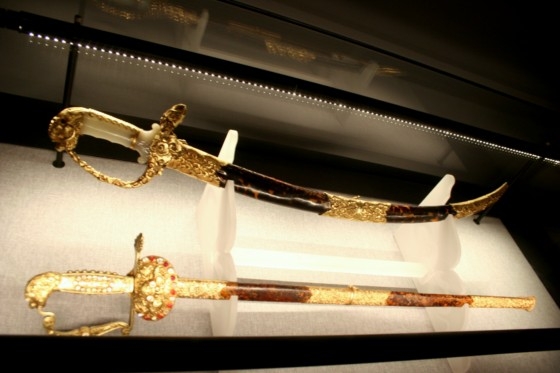 A pair of swords which
symbolizes the king’s power. They were cast in the 19th century, 1.25kg in
weight.
A pair of swords which
symbolizes the king’s power. They were cast in the 19th century, 1.25kg in
weight. 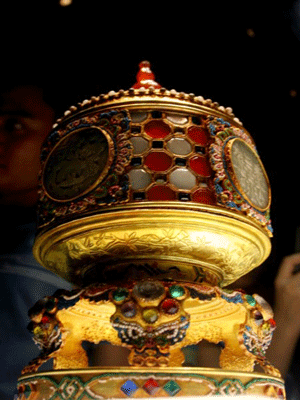 An altar box made of gold
and gem, 4.3kg.
An altar box made of gold
and gem, 4.3kg. 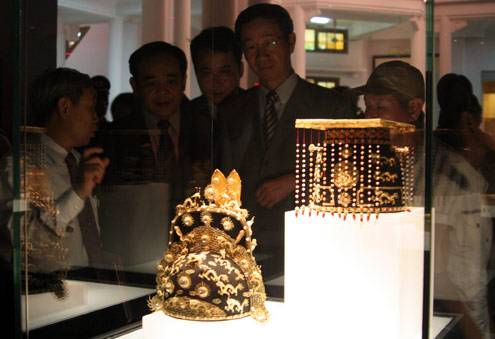 The
King's gold hat (19th century).
The
King's gold hat (19th century). 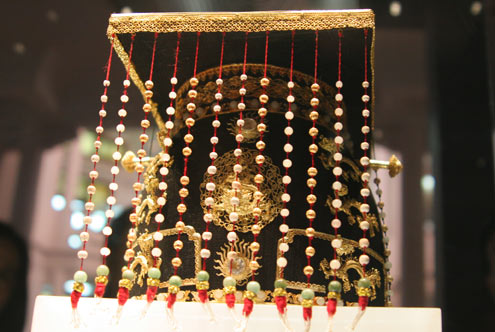 Another gold hat of the
Nguyen Dynasty (19th century), over 660gr in weight, with
many gold-made patterns.
Another gold hat of the
Nguyen Dynasty (19th century), over 660gr in weight, with
many gold-made patterns. 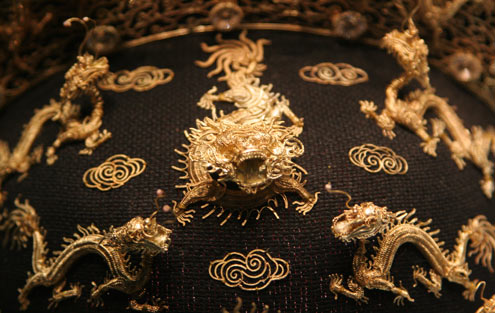
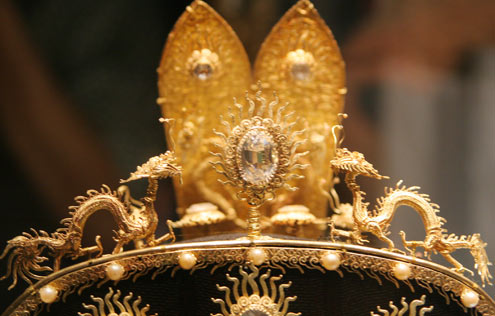
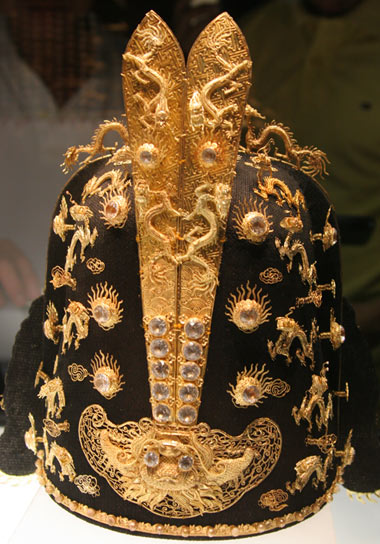
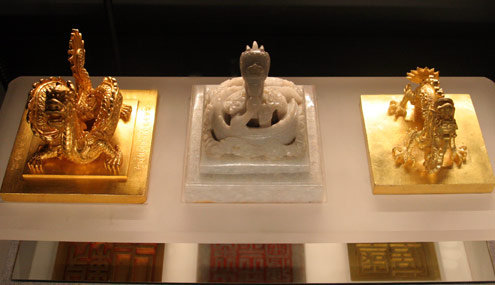 From the left: A gold seal cast in 1827 under King
Minh Mang’s dynasty, which is 8.5kg
in weight called “Sac Menh
Chi Bao”; another seal named “Dai Nam Thu” of the Nguyen
Dynasty; and “Quoc Gia
Tin Bao” seal of 5kg in weight.
From the left: A gold seal cast in 1827 under King
Minh Mang’s dynasty, which is 8.5kg
in weight called “Sac Menh
Chi Bao”; another seal named “Dai Nam Thu” of the Nguyen
Dynasty; and “Quoc Gia
Tin Bao” seal of 5kg in weight. 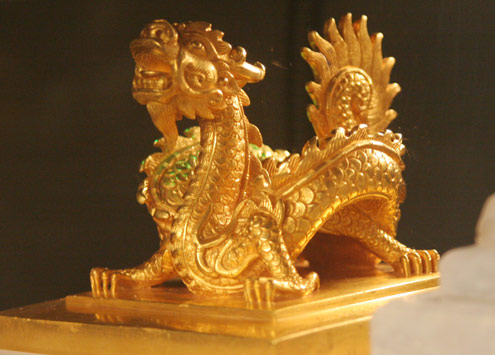 The “Sac Menh Chi Bao” seal.
The “Sac Menh Chi Bao” seal.
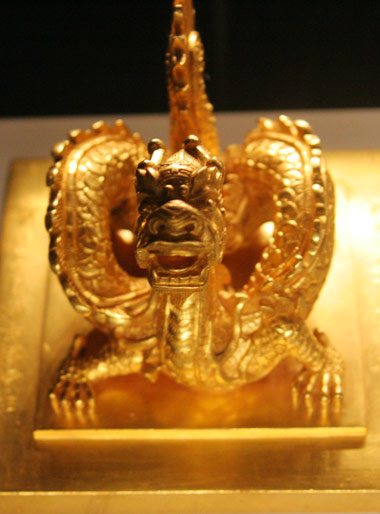
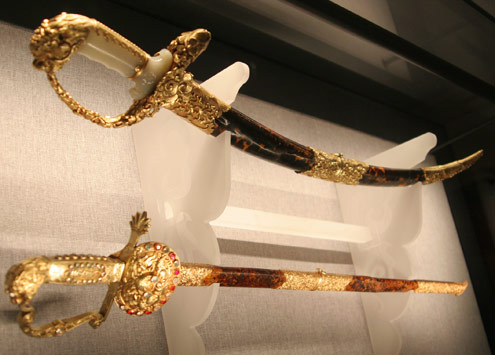 A gold sword of the Nguyen
Dynasty (19th century) and “An Dan Bao Kiem” sword cast under King Khai Dinh’s
dynasty (1916-1925).
A gold sword of the Nguyen
Dynasty (19th century) and “An Dan Bao Kiem” sword cast under King Khai Dinh’s
dynasty (1916-1925). 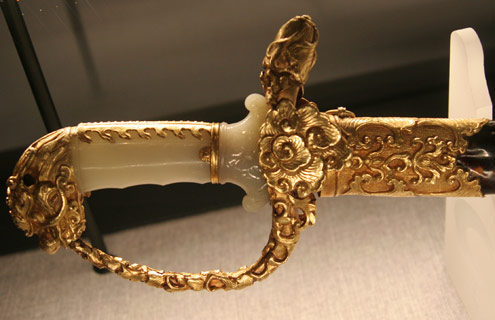
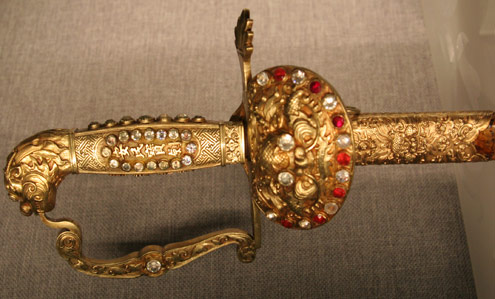
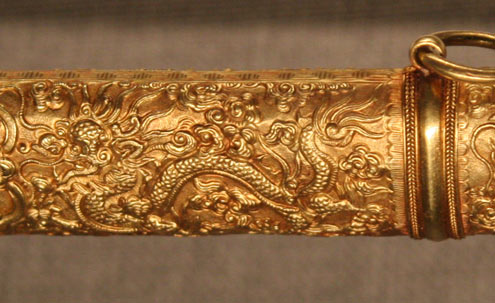
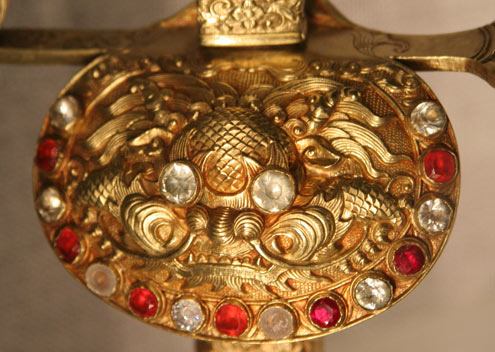
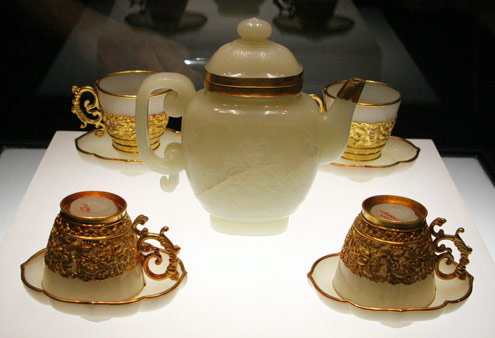 Gem-made cups inlaid with
gold.
Gem-made cups inlaid with
gold. 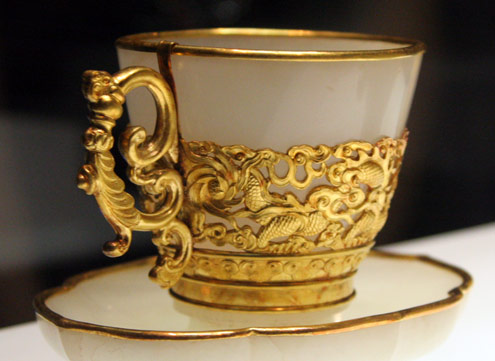
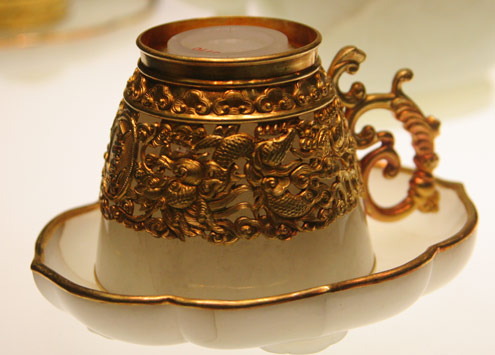
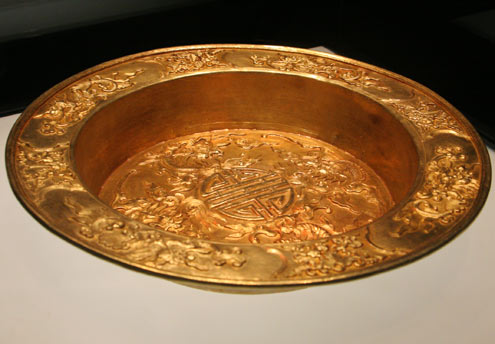 A gold basin of 1.4kg in
weight.
A gold basin of 1.4kg in
weight. 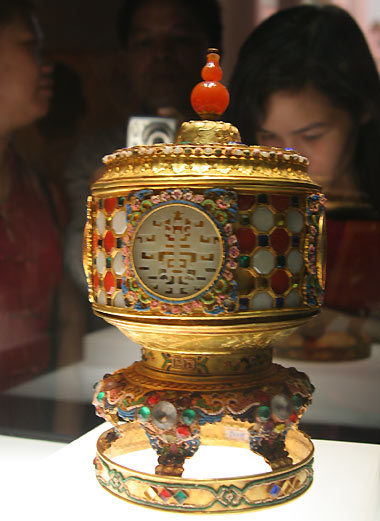
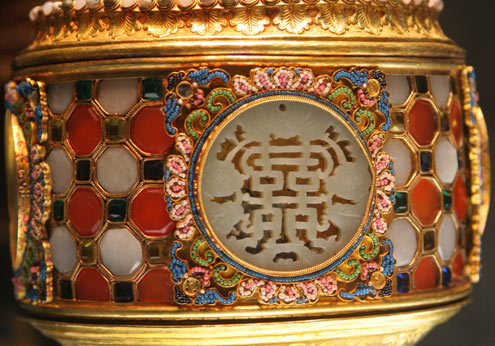
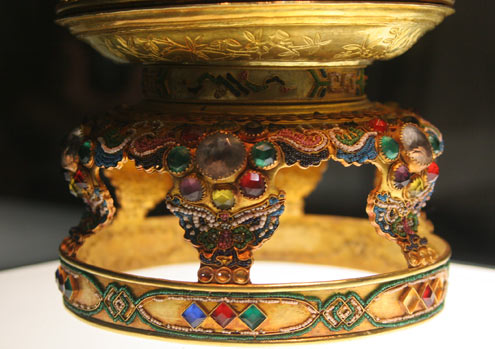
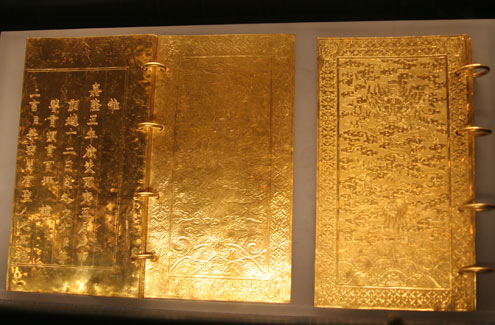 A gold-inlaid book made in
1806, 2.1kg.
A gold-inlaid book made in
1806, 2.1kg. 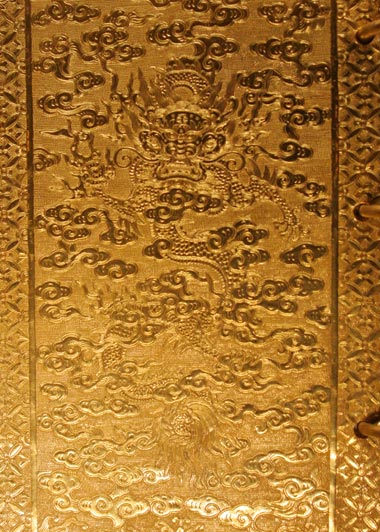
VietNamNet Bridge

